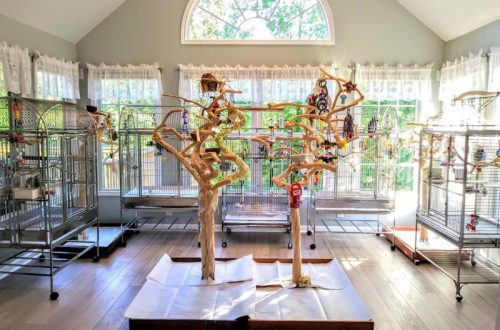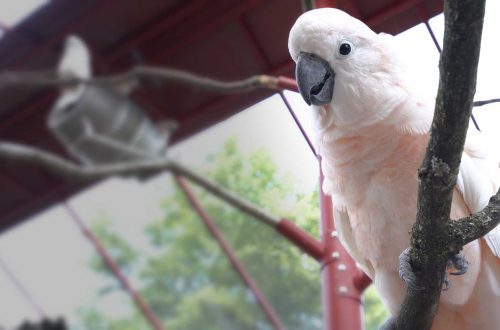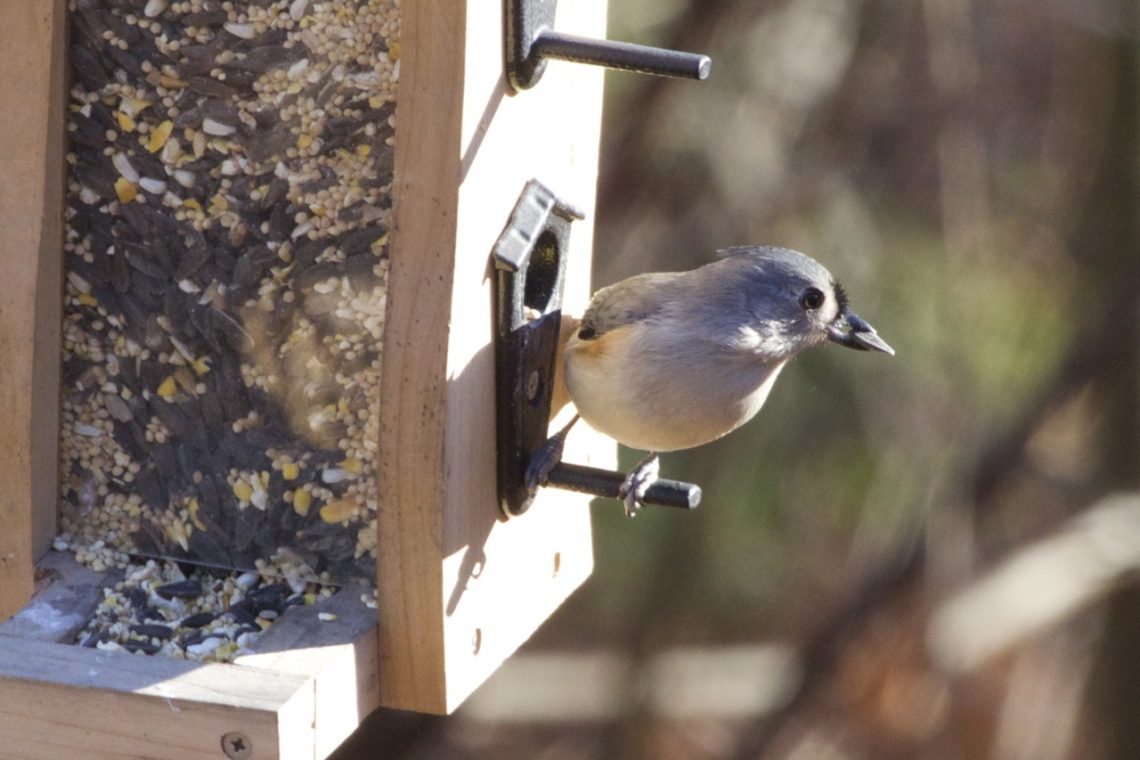
Wild birds at home
It will not be a secret for true nature lovers that at home it is perfectly possible to keep various wild birds of our native avifauna, and in some cases it is even possible to achieve their reproduction. In addition, selection work is underway on some species (for example, carduelis), a certain number of colors have been bred. Let’s take a closer look at these beautiful representatives of the feathered world.

What wild birds can please us at home?
Contents
Bullfinch at home
Bullfinch (Pyrrhula pyrrhula) we associate with severe frosts and winter cold, but for more than one century these birds have been successfully kept at home and even hatch chicks.
This bird belongs to the finches, as evidenced by its thickened beak, and is related to sparrows, goldfinches and even canaries. Usually in winter, these birds are very noticeable, since males have a bright red abdomen, females are not so expressive. But in summer, when the forests are covered with greenery, it is almost impossible to see bullfinches, in addition, some of them are nomadic birds, the rest are sedentary. Both males and females sing. The voice is quite loud, but the birds usually sing for a short time.
Bullfinches live in captivity for about 10-12 years.
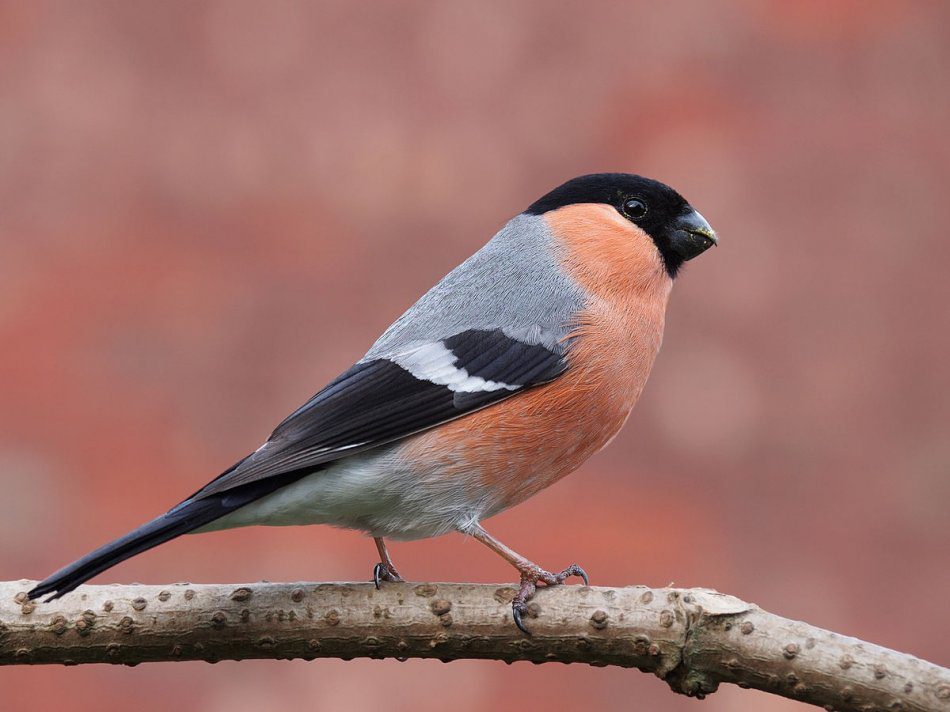
In the photo: bullfinch
An inexperienced person should not catch birds on their own: this is illegal, and most likely will lead to the death of a bird. Bullfinches are best purchased from breeders or licensed birders only after the bird has adapted. The bird should not be afraid of a person and should be accustomed to feed. Be sure to know the composition of these feeds in order to harvest and mix them yourself.
The diet of the bullfinch must be very rich, since in nature they do not limit themselves to only a few types of grain. The state of health of the bullfinch, its plumage and life expectancy will directly depend on this.
In the home diet of a bullfinch, there should be not only a rich grain mixture (about 3 tablespoons per bird), but also various types of berries (mountain ash, viburnum, cherry, currant, juniper, barberry, etc.) that can be harvested by freezing. In addition, offer the birds greens, cones, twigs with buds, vegetables and fruits, sprouted grains.
Sometimes you can pamper bullfinches with insects and their larvae. It is better to use home breeding flour worms, so there is less chance of infecting the bird with helminths.
During the molting period, be sure to enrich the diet with animal proteins, you can add special food for red canaries, this will help keep the color bright.
The cage for bullfinches should be spacious (80x50x40 cm), choose a safe material, but keep in mind that liquid droppings quickly render some types of plastic unusable. Perches should be of suitable thickness (several different diameters) and with bark, located at different levels in the cage. Do not forget about a bathing suit, a drinking bowl, a container for a mineral mixture, sepia, chalk. Feeders for wet and dry food should be separate.
During the period of adaptation of the bullfinch, it is better to place the cage higher so that the birds are not so nervous at the sight of a person. The cage should not be in a draft and under direct sunlight, but in a bright place. When keeping a bullfinch, watch the length of the daylight hours: it should not differ from the natural one.
After adaptation, bullfinches can be let out for walks, but the room should be secured. Walks are arranged only under supervision. Make special perches and stands for birds, where bullfinches can spend time and knead their wings.
Waxwing at home
Waxwing (Bomrucilla garrulus) just as we associate the bullfinch with winter, because it is then that we observe these birds flying from tree to tree and eating mountain ash. Waxwings are also quite possible to keep at home.
These are rather large birds with a body length of up to 23 cm, the main color of the body is pink-gray, black, white and yellow feathers on the wings and tail. On the head of the waxwing there is a noticeable crest. The song of male waxwings is quite loud and piercing. In the diet in the summer period there are a lot of insects, berries, seeds. In winter, birds feed mainly on berries.
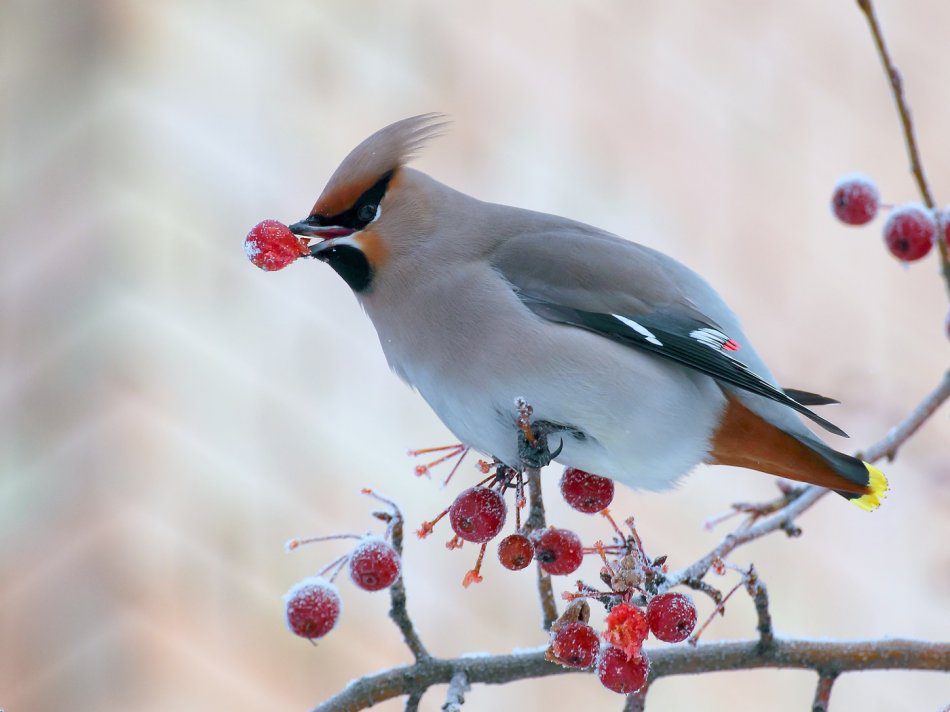
In the photo: whistler
When keeping waxwings at home, you need quite a lot of space, it is better to use an aviary, since the birds are quite large and require a lot of space for flying. This is very important for their health, as waxwings are very prone to overeating and obesity. For maintenance, it is better to pick up a couple of birds or place a waxwing in a flock: they are quite peaceful and do not arrange fights. However, waxwings live in captivity for only a few years, in nature often longer.
The diet of waxwings should be balanced and varied, since life expectancy and plumage quality depend on it.
Waxwings have a very fast metabolism, they eat a lot and defecate a lot, this should be taken into account when choosing materials for an aviary. Access to bedding change should be convenient and easy. There should also be washable materials around the enclosure, as waxwings are quite messy when eating.
In the diet of waxwings at home, there should be a variety of berries (various types of mountain ash, hawthorn, sea buckthorn, barberry, juniper, cherry, cherry, blueberry, cranberry and others), juicy fruits, vegetables, greens, sometimes insects and animal feed. Birds practically do not eat grain feed.
In the waxwing cage, there should be access to fresh water, mineral supplements. Perches for waxwings should be of the appropriate diameter and located at different heights, this will help the birds to move more actively.
Yurok, or reel at home
Yurok or reel (Fringilla montrifgilla) also belongs to the finches and is a representative of the avifauna of Belarus. Yurki have a red color with black patches on the head, back and wings. The song of the finch is a low, creaky chirp. They are usually kept for their beautiful plumage.
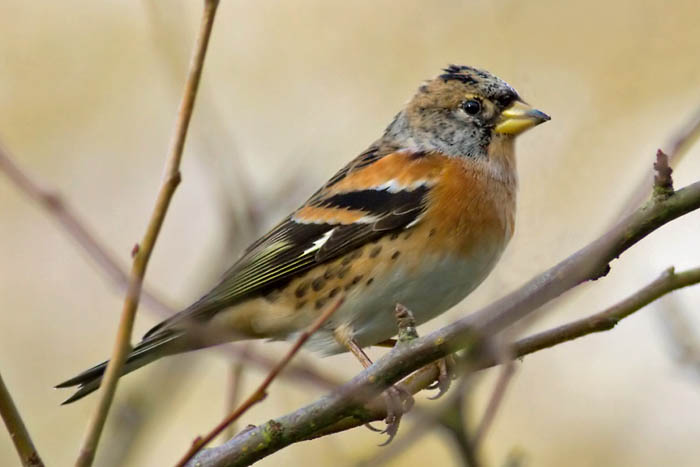
In the photo: a woodcock
Finches at home can be kept in spacious cages or aviaries. You should be careful with other birds, as packs can be aggressive towards them.
In the cage of the reel, there should be suitable perches with bark, a bathing bowl, a drinking bowl, feeders, a mineral mixture, chalk, sepia.
The diet of the reel should include grain feed, greens, berries, fruits and vegetables. During the molting and breeding season, offer the birds insects, germinated grains. Place young twigs with buds, cones, etc. in the cage.
Finch at home
Finch (Fringilla coelebs) stands out among wild songbirds not only with beautiful plumage, but also with a beautiful song. The males of the chaffinch are brightly colored – there is a blue-gray cap on the head, the back and chest are reddish, the wings are black with white spots. The female chaffinch has a duller coloration. In the diet of wild birds, not only grain plants, berries, but also insects, their larvae.
Finches in captivity can live for about 10 to 12 years.
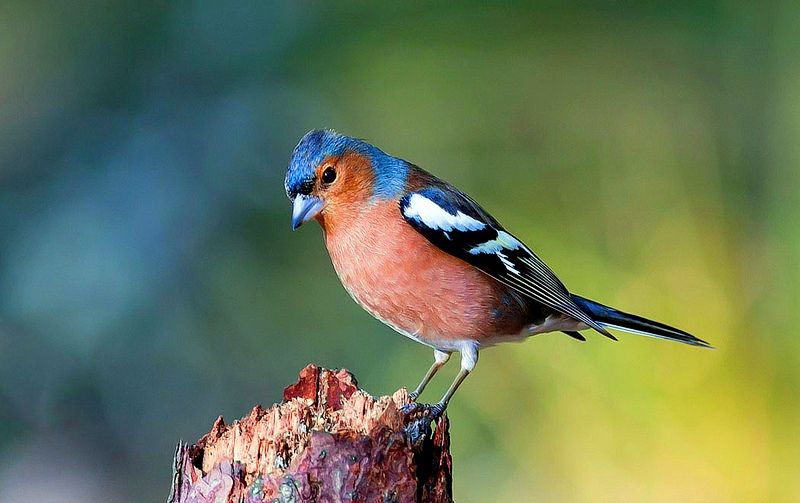
Pictured: finch
The bird must be purchased adapted to humans. The fact is that finches get used to the conditions of captivity quite hard, they often beat against the bars of the cage, knocking down their plumage. Adult birds are especially difficult to get used to human society.
In an aviary, a finch will be more comfortable, but suitable conditions can also be created in a spacious cage. They can be kept with care with other bird species, as male finches can be quite pugnacious.
Finch males can delight you with their song almost all year round, excluding periods of molting.
In the finch enclosure, perches of a suitable diameter should be installed at different heights, in addition, branches with foliage and berries can be placed. In addition, the cage should have a bathing bowl, a drinking bowl, feeders, mineral supplements, chalk, sepia.
The diet of finches at home should be quite varied, a mixture of cultivated plants and wild, weeds is best suited. Offer juicy fruits, vegetables, a variety of berries. During the period of molting and breeding, for example, the diet of a finch must be enriched with insects, larvae, germinated cereals.
The cage or aviary should be located in a well-lit place, not in a draft.
Be sure to thoroughly wash your finch’s feeders and drinkers, as they can often be contaminated with droppings.
Tap dancing at home
common tap dance (Carduelis flammea) is a small songbird with a body length of about 12 – 15 cm.
Males and females of the tap dance are painted in brown and white tones, there are caps of red color, males have a pinkish chest and abdomen.
Tap dancers are quite unpretentious, but they are not very often kept at home, since they do not sing very “brightly”. They are great for flocking with other songbirds. If there is no flock, then the best solution would be to acquire a couple of birds. They must be adapted to the person. It is pleasant to watch such birds, they cheerfully jump on the perches.
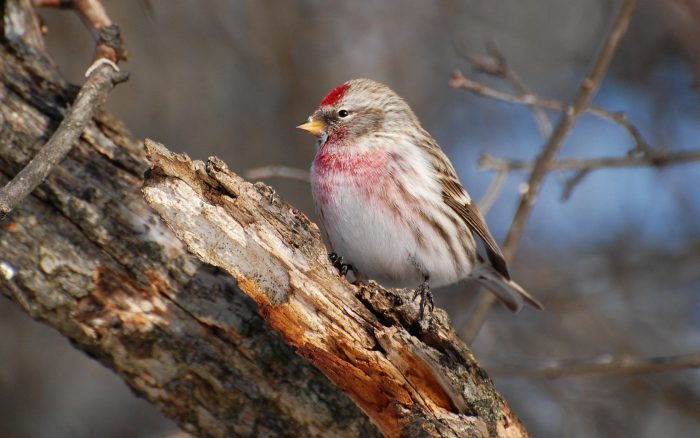
In the photo: tap dance
Prepare a spacious cage or aviary for tap dances, where many perches of a suitable diameter should be placed, small trees or bushes can be placed in the aviary. You definitely need a bathing suit, birds love to swim very much.
In captivity, tap dancers live only a few years, in nature up to 8 years.
They feed on mixed food. The diet of the tap dance should be based on grain feed – seeds of weeds, cereals, trees and shrubs, berries, fruits, vegetables, green feed. Also, insects and their larvae should be included in the diet; in nature, they readily eat aphids. Do not overfeed tap dancers, these birds tend to be overweight. The cage should contain mineral supplements, chalk and sepia.
Greenfinch at home
greenfinch (carduelis chloris) belongs to the finches, it has a rather powerful beak. The color of the body of the greenfinch is mainly olive-brown, there is a yellow stripe on the wing, in the females of the greenfinch the color is lighter. Greenfinches feed on vegetable and animal feed. In summer, these are insects and larvae, in winter – berries, seeds.
The song of greenfinches is rather inconspicuous, therefore they are rarely kept by bird lovers, but they get used to captivity quite easily and can please their man for many years. With other birds, they behave calmly.
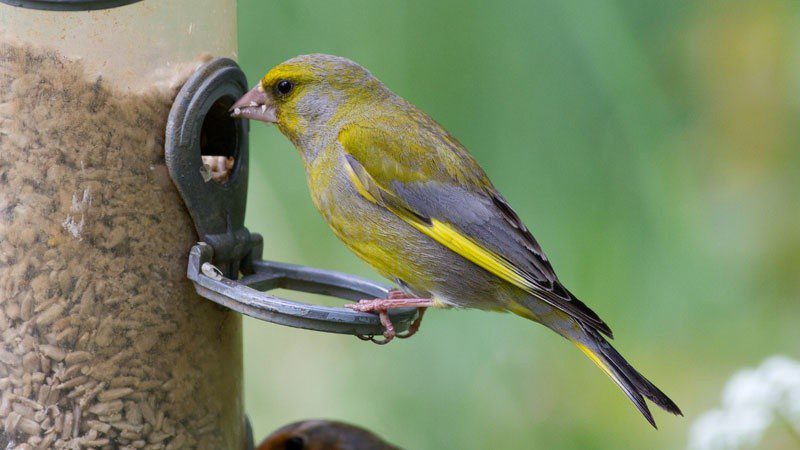
In the photo: greenfinch
After adaptation, these birds can be settled in a spacious cage or aviary. The diet should contain various seeds – industrial feed for forest birds or canaries is suitable, it can be enriched with weed seeds. Be sure to offer a variety of green foods, vegetables, and fruits. During molting, offer insect larvae to birds.
Place a swimsuit, feeders, many perches, a mineral mixture, chalk and sepia in the greenfinch’s cage.
Oatmeal at home
Yellowhammer (Emberiza citrinella) has a bright yellow-brown color, females are more dull. The song of the oatmeal is rather uncomplicated, monotonous. The basis of the oatmeal diet is plant foods (cereals, weeds, berries, etc.). During the breeding season, insects are consumed, and the chicks are fed mixed food.
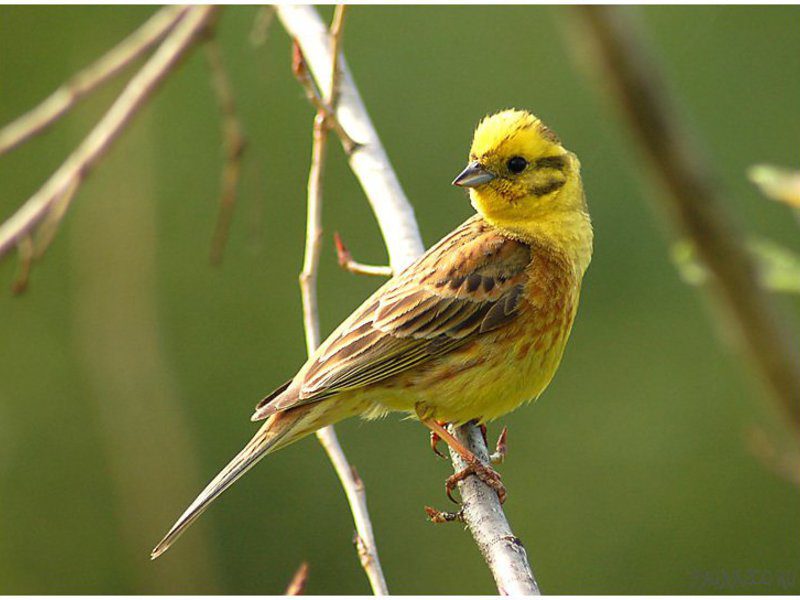
Pictured: oatmeal
In a bunting cage or aviary, place suitable perches with bark, a bathing suit, and feeders. Be sure to place the mineral mixture and stones in the cage. Often offer the birds greens, buds, germinated grains, insect larvae.
The cage for oatmeal should be spacious and stand in a bright place.



